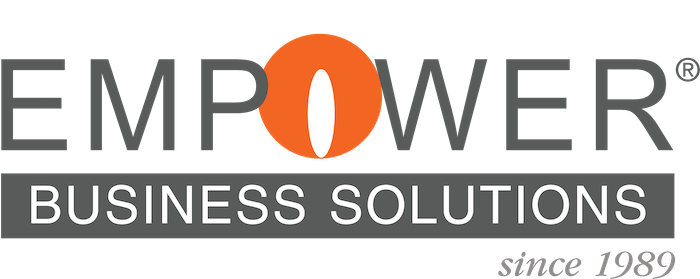When businesses first launch, they prioritize efficiency, affordability, and simplicity. QuickBooks and other entry-level accounting tools check those boxes. But as businesses grow, what once worked seamlessly begins to create bottlenecks. Scaling isn’t just about adding customers—it’s about increasing complexity in operations, financial management, and strategic planning.
Many businesses hold onto their legacy ERP or QuickBooks systems for too long, not realizing the hidden costs of inefficiency, data silos, and manual workarounds. The moment a system stops enabling growth and starts limiting it, it’s time for a change. Scalable ERP solutions provide the flexibility, automation, and real-time data insights that growing companies need to compete and thrive.
Signs You’ve Outgrown QuickBooks & Legacy ERP
Not sure if your current system is holding you back? Check out our guide, “8 Ways Outdated ERP Systems Damage Business.”
Here are the biggest red flags:
1. Data Silos & Disconnected Workflows
Early-stage businesses often add software tools as needed—accounting software here, inventory management there, a CRM for customer tracking. But if those systems don’t communicate, data ends up trapped in silos, forcing employees to manually transfer information across platforms. This not only wastes time but also increases the risk of errors and inconsistencies.
Data fragmentation makes it nearly impossible to get a full financial picture. Sales, accounting, inventory, and supply chain systems should work together, not in isolation. When reports need to be pulled from different sources and then manually combined, it slows down the ability to make timely and informed decisions.
2. Manual Workarounds & Inefficiencies
When an ERP system can’t accommodate business growth, employees develop their own manual processes to fill the gaps. This might mean tracking financials in spreadsheets, managing inventory outside the system, or relying on email chains to approve transactions. The more manual work involved, the greater the chances for errors, miscommunication, and slow decision-making.
Time spent on repetitive data entry and reconciling inconsistencies is time taken away from strategy, customer service, and growth initiatives. This is particularly challenging in industries like manufacturing and distribution, where accuracy and speed directly impact profitability.
3. Struggles with Forecasting & Reporting
Legacy ERP and QuickBooks often fall short when it comes to real-time reporting and advanced forecasting. If pulling reports requires hours of data entry, or if leaders can’t get a clear financial snapshot when they need it, the company is flying blind. Modern ERP solutions provide automated, real-time reporting to drive faster, smarter decision-making.
A lack of accurate, real-time data leads to reactive rather than proactive business management. Without forward-looking analytics, companies struggle to forecast demand, optimize inventory, and plan for strategic growth.
How Scalable ERP Supports Growth
A scalable ERP system eliminates these pain points by providing businesses with:
1. Automation & Workflow Efficiency
Automated processes replace manual data entry, reducing errors and freeing up time for employees to focus on higher-value tasks. Workflows become streamlined, ensuring seamless operations from finance to supply chain management.
Automation extends beyond financial management—it also optimizes supply chain planning, HR processes, and customer relationship management. Businesses can create custom workflows that fit their specific needs, ensuring better operational control and efficiency.
2. Flexibility for Expansion
Whether a company is adding new product lines, expanding into new locations, or acquiring another business, a scalable ERP adapts to changing needs. Cloud-based solutions, in particular, allow for easy customization and remote accessibility.
The ability to scale ERP functionality ensures that as the business grows, operations remain smooth. Instead of requiring constant system replacements, a scalable ERP grows with you, avoiding major disruptions.
3. Seamless Integrations with Third-Party Tools
Unlike outdated systems that struggle with compatibility, scalable ERP solutions integrate with essential business tools—CRM, HR management, e-commerce platforms, and more. This ensures data flows effortlessly across the entire organization.
Third-party integrations expand the ERP’s capabilities without requiring costly custom development. This allows businesses to stay agile and competitive, incorporating the latest innovations in AI, automation, and predictive analytics.
Real-World Impact—Why Businesses Switch to Scalable ERP
QuickBooks and outdated ERP systems may suffice for a time, but growing companies—especially in manufacturing, distribution, and construction—reach a tipping point where inefficiency stifles progress. Consider these real-world scenarios:
- Manufacturing Firm: A small manufacturer relied on QuickBooks and spreadsheets, leading to frequent order errors and lost revenue. After switching to a scalable ERP, they achieved 40% faster order processing and eliminated stockouts.
- Distribution Company: A mid-sized distributor struggled with disconnected inventory and sales data. Their new ERP integrated both, leading to a 25% reduction in lead times and better customer satisfaction.
- Construction Business: A construction firm managing multiple projects found QuickBooks incapable of handling complex cost tracking. With an ERP upgrade, they gained real-time financial visibility, improving profitability on every project.
Beyond these case studies (And many more that can be found here), a study by Aberdeen Group found that businesses using modern ERP solutions saw a 20% reduction in operating costs and 15% improvement in order accuracy—demonstrating the real impact of scalable ERP.
Some Final Thoughts
Growth demands efficiency, automation, and adaptability. If your current system is slowing you down, it’s time to explore scalable ERP solutions. How do you know? Talk to your teams and don’t be afraid to receive honest feedback from those who do the day to day in your business.
Book a Future-Ready Technology Review today and let’s assess how an ERP upgrade can drive your business forward.
Download the “8 Ways Outdated ERP Systems Damage Business” PDF for deeper insights into the risks of sticking with legacy systems.
